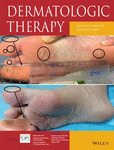Indigenous therapies for skin diseases in sub-Saharan Africa
Abstract
Typically, most patients in Nigeria would have tried both oral and topical remedies before visiting a dermatology clinic. There are no documentations of what these remedies are. The aim of this study is to determine what remedies patients use and the influence of age, gender, level of education, and marital status on the choice of herbal remedies. This was a retrospective cross-sectional chart review over a 3-year period. Records of all new patients attended to at the dermatology clinic between October 2015 and October 2018 were retrieved and relevant information extracted. Data were analyzed using SPSS version 23.0. A total of 835 new patients were seen during the study period, 56.9% females and 43.1% males. Prior to attending the dermatology clinic, 52.8% had used a remedy which was herbal in 9.1% and Western in 90.9%. Out of those that had used herbal medications, 65% was oral, 27.5% was topical and 7.5% was topical and oral. Out of those that had used Western medications, 63.1% was topical 23.9% was oral and 13% was oral and topical. Herbal and western medications were used in 11 persons. Most Nigerian patients use a Western remedy before dermatology clinic attendance. In the few patients who use herbal remedies, this is independent of age, gender, level of education, diagnosis, and marital status.
CONFLICT OF INTEREST
The authors declare no potential conflict of interest.




